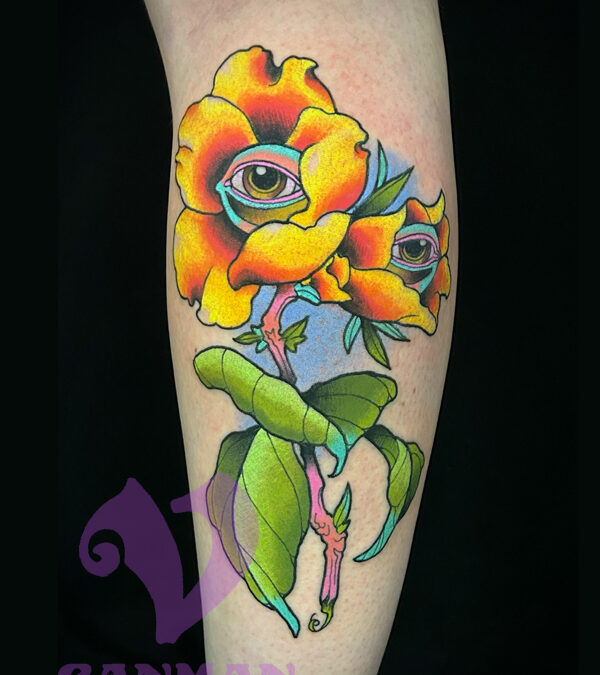This Trippy flower tattoo is a fun use of the imagination.
Canman was inspired by the surreal art of Salvador Dali.
His paintings are very surreal and can be described as imaginative realism.
Looking for a unique Trippy flower tattoo?
Go to our Tattoo Request form to get your new tattoo project started!
About surreal art
Surrealism is an artistic and cultural movement that emerged in the early 1920’s.
It focused on unleashing the power of the subconscious mind through creative expression.
Surrealist art often explores the juxtaposition of elements that defy conventional logic and reality.
It aims to bypass rational thought and tap into the unconscious to create dreamlike, often bizarre, and unexpected imagery.
Surrealism often presents bizarre, dream-inspired scenes that challenge reality.
Therefore, Artists create strange, unsettling, and fantastical compositions.
Surrealist artists sought to express the subconscious mind.
For example, they use techniques like automatism (automatic drawing or writing) to tap into raw, unfiltered thoughts and emotions.
Also, Surrealist art combines unrelated or contradictory elements to create new, startling, and thought-provoking associations.
Symbolism is a significant part of surreal art.
As a result, Artists use symbols and metaphors to express their inner thoughts and feelings indirectly.
Many surrealists were influenced by the psychological theories of Sigmund Freud.
Particularly his ideas about dreams, the unconscious, and repressed desires.
Some prominent surreal artists include Salvador Dalí, René Magritte, Max Ernst, Joan Miró, and André Breton.
Surrealism extends beyond visual arts to literature, film, and other creative forms.
In other words, Surrealist principles have influenced numerous contemporary artists.
It continues to inspire new generations of creatives exploring the boundaries between reality and imagination.
The movement was not just about art but also about a broader cultural and philosophical approach.
In conclusion, Surrealism sought to challenge societal norms, question reality, and provoke critical thinking about the nature of existence, dreams, and the human psyche.
